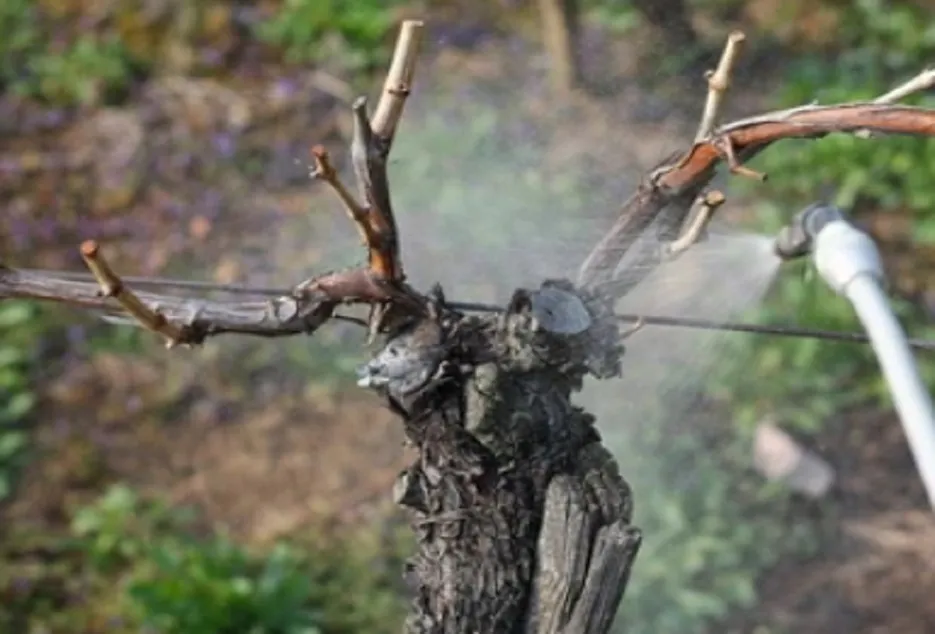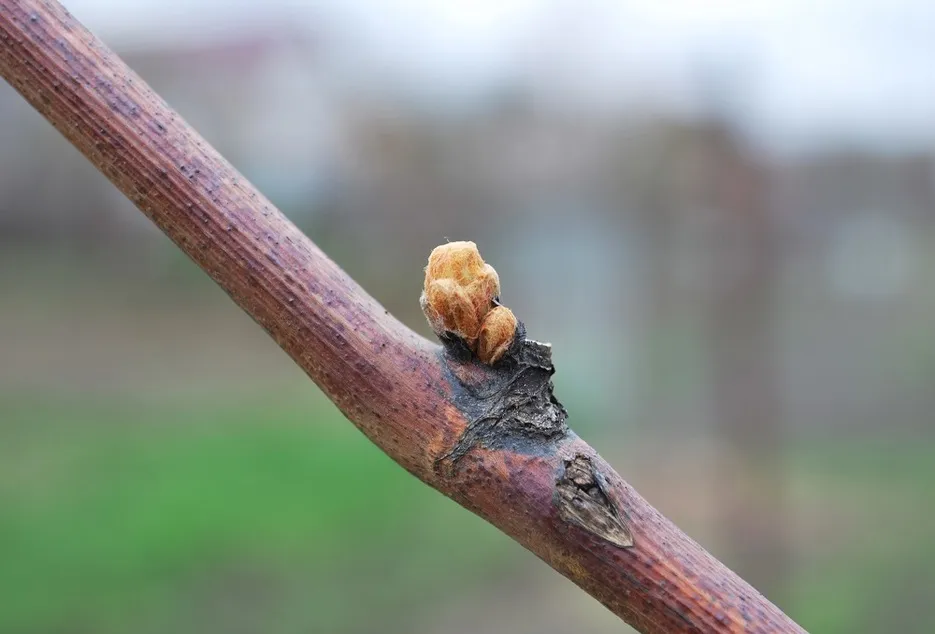 পেছনে
পেছনে

Grapes are an important crop in Maharashtra, Karnataka, Gujarat and many states farmers are growing this crop. Downy mildew and Powdery mildew diseases are major threats to grapes cultivation. The following chemical control practices are recommended for the management of these diseases.
Downey mildew
Downey mildew

Description: - Downy mildew of grapes occurs in most parts of the world where grapes are grown but favors those regions that experience warm, wet conditions during the vegetative growth of the vine. Downy mildew affects the leaves, fruit, and shoots of grapevines. Losses occur through the death of leaf tissue, low-quality fruit, and weakened young shoots. When weather is favorable and no control measures are taken, downy mildew can easily cause 50-75% crop losses in one season.
Symptoms of Downey Mildew
Symptoms of Downey Mildew
Symptoms of downy mildew are usually first noticed on leaves as yellowish, oily lesions initially visible on the leaf’s upper surface and commonly bound by leaf veins. Soon after the lesions are observed, a white cottony, felt like, or ‘downy’ mass is observed on the corresponding underside of the leaf. This downy growth is distinctive and should not be confused with natural hairiness or pubescence on the lower leaf surface of many grape varieties. Foliar lesions may be numerous enough to cause defoliation, particularly in September and October when spray programs “slack off”. Such defoliation reduces sugar accumulation and decreases cold hardiness. Downy mildew is often observed on young shoot tips and fruit clusters. Infected shoot tips thicken, curl, and become white during sporulation. Eventually, affected tips become brown and die. Similar symptoms may be seen on petioles, tendrils, and young inflorescences.


Spray schedule For Downey Mildew
Spray schedule For Downey Mildew
A. Bud burst Stage:-
A. Bud burst Stage:-
Antracol®
1st spray:- Antracol is applied at the bud burst stage (7-8 days after pruning). At the Dose of Antracol 300 gm/100 lit of water.


B. Leaf / Vegetative stage Stage:-
B. Leaf / Vegetative stage Stage:-
Melody® DUO
1St spray:- Melody Duo is applied at the vegetative stage (9-14 days after pruning) at the dose of 900 g per acre.
Aliette®+Antracol®
2nd spray:- Aliette+Antracol is applied at the vegetative stage (15-17 days after pruning). At the dose of Aliette 560-800 gram/ acre & Antracol 300 gm/100 lit of water for effective control.
Melody® DUO
3rd spray:- Melody Duo is applied at the pre-flowering stage (31-35 days after pruning) at the dose of 900 grams per acre


C. Flower initiation and Flowering stage
C. Flower initiation and Flowering stage
PROFILER®
1st spray:- Profiler is applied at the pre-flowering stage (18-21 days after pruning). Dose of 900 to 1000 grams per acre.
2nd spray:-
Profiler is applied at the pre-flowering stage (25-30 days after pruning). Dose of 900 to 1000 grams per acre.


Powdery Mildew-Grape
Powdery Mildew-Grape
Description:- Initial symptoms of powdery mildew appear on leaves as chlorotic spots on the upper leaf surface. Signs of the pathogen appear a short time later as white, webby mycelium on the lower leaf surface. As spores are produced, the infected areas take on a white, powdery, or dusty appearance. On fruit and rachises, the pathogen appears as white, powdery masses that may colonize the entire berry surface.


Symptoms of Powdary Mildew :-
Symptoms of Powdary Mildew :-
The powdery mildew fungus can infect all green tissues of the vine. Small, white, or grayish-white patches of fungal growth appear on the upper or lower leaf surface. These patches usually enlarge until the entire upper leaf surface has a powdery, white to gray coating. The patches may remain limited throughout most of the season. Severely affected leaves may curl upward during hot, dry weather. Expanding leaves that are infected may become distorted and stunted. On young shoots, infections are more likely to be limited, and they appear as dark-brown to black patches that remain as dark patches on the surface of dormant canes.


A.Flower initiation and Flowering stage
A.Flower initiation and Flowering stage
NATIVO®
1st Spray:- Nativo is applied at the pre-flowering stage (20-25 days after pruning).Nativo at the dose of 70 grams per acre.




Luna® Experience
Luna® Experience
2nd Spray:-
Luna Experience is applied at the flowering stage (36-40 days after pruning). One or two sprays shall be given at 10-15 days intervals at the dose of 225 ml per acre 3rd spray:- Luna Experience is applied at the berry setting stage (46-50 days after pruning). At the dose of 225 ml per acre.


Thank you for reading this article, we hope you clicked on the ♡ icon to like the article and also do share it with your friends and family now!








